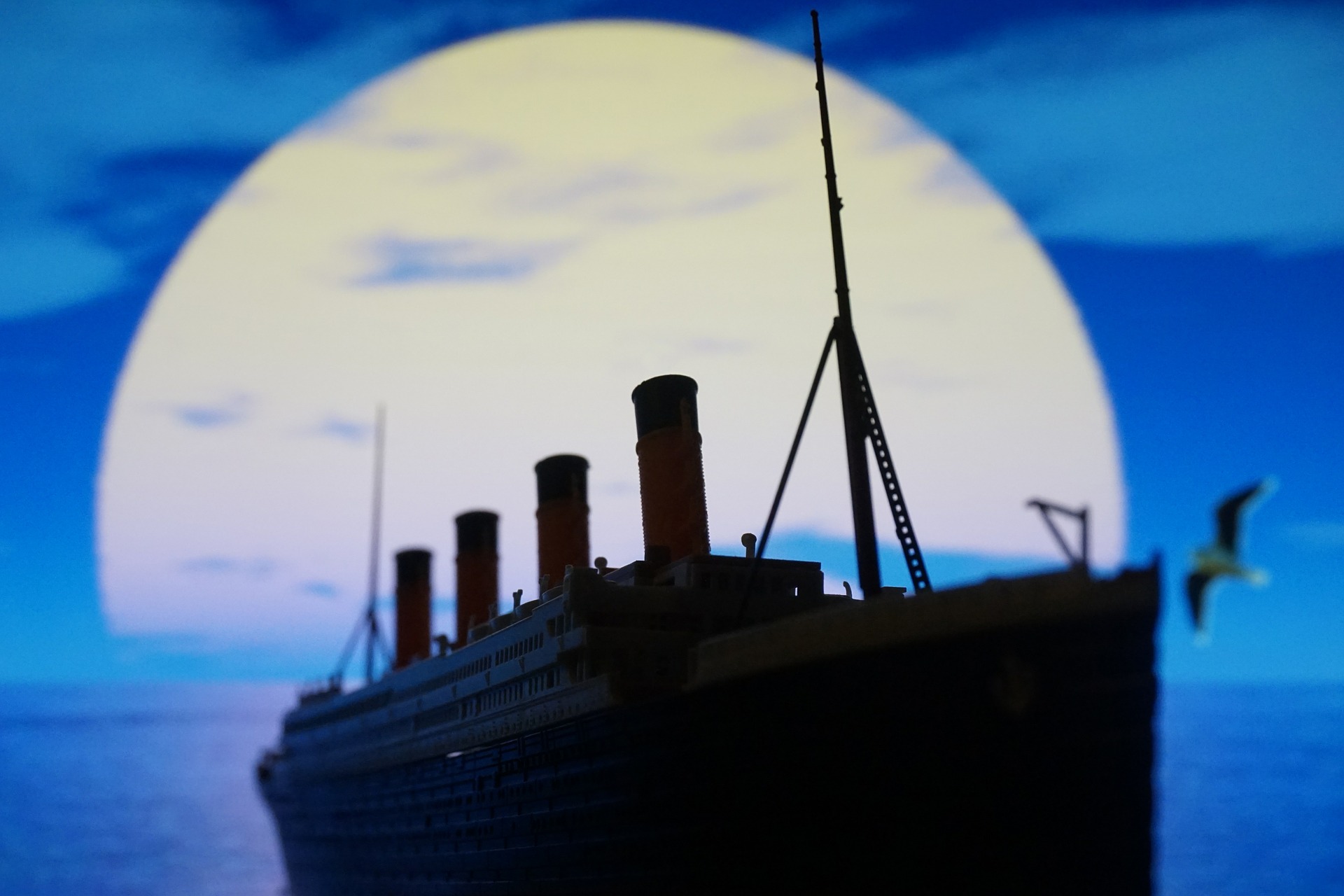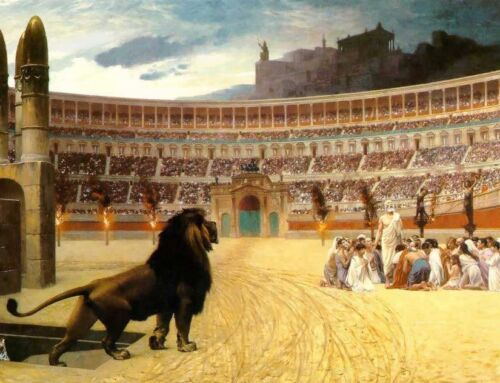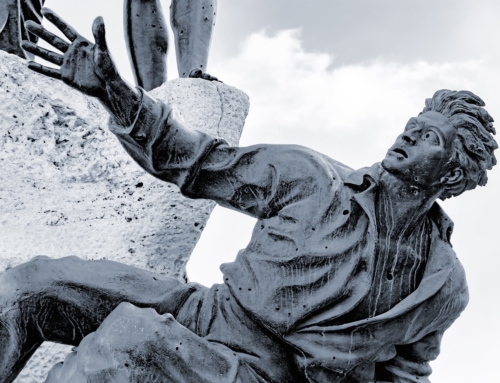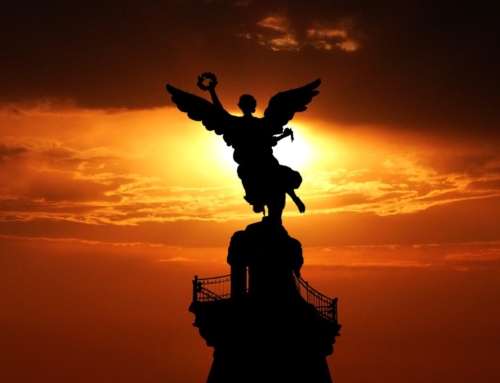While doing research for a book on leadership, I came across a number of stories about the Titanic disaster in 1912 that riveted me to my seat. I had never heard of the extraordinary heroism of some of the men who went down with the ship in order to save the lives of others.
These stories must be set in contrast to the leadership failures that created the conditions for the colossal destruction and loss of life. The substance of what you will read below formed the introduction to my book on leadership, and I’m sure you will find them as inspiring as I did.
Let’s consider a few of the stories of disaster and heroism from the loss of the Titanic.
Catastrophic errors of judgment
Captain Edward J. Smith, an experienced British Royal Navy officer, drove the Titanic “full steam ahead” through an ocean full of icebergs with the ambition of setting a new trans-Atlantic passage record to New York. That act alone wins Captain Smith first prize in the “What Was He Thinking?” contest. We have all made errors of judgment in life, but we pray to be saved from catastrophic errors like this one and a few others that he made.
For example, pressed for time, Captain Smith cancelled the customary lifeboat drill with passengers the day before the Titanic set sail. That same day, Smith dismissed an officer who took the key to the binocular case with him, thus depriving the Titanic’s crow’s nest lookouts of their binoculars to scan the horizon for icebergs.
On the night of the disaster, Smith went to bed after a banquet held in his honor, even though the ship was heading into very dangerous waters. He was awakened by the ship’s collision with the iceberg an hour later.
The Captain also failed to maintain a dedicated line for radio contact with other ships because his communications officer was too busy sending the first-class passengers’ cables back to the mainland detailing the adventures of their pleasure cruise.
Virtually nothing is known of Captain Smith’s final two hours on the Titanic.
Oversight fiascoes
Ominously, the year before the Titanic sailed, the same Captain Edward Smith was at the helm of the Titanic’s sister ship, the Olympic, which collided with a British warship, the RMS Hawke, near the Isle of Wight. A Navy investigation laid the blame for the incident squarely on Captain Smith.
Despite that blot on Smith’s recent history, the Titanic’s supervising authority, the White Star Fleet, nonetheless chose him to captain the Titanic. That committee deserves second prize in the “What Were They Thinking?” contest.
Also, the First Officer of the Titanic, William McMaster Murdoch, delayed a full thirty seconds in ordering a change of course when he was informed of the approaching iceberg. The collision occurred exactly thirty-seven seconds after the iceberg was spotted. Murdoch gave the order with just seven seconds left to impact, but by that time, changing the course of the mammoth vessel was impossible.
The lone neighbor’s failures
Another ocean-liner, the Californian, was just six nautical miles away when the lookout crew spotted a four-stack passenger ship (the Titanic) that had ceased its forward motion. The crew noticed that the mysterious ship sent up what looked like numerous distress rockets at intervals, and they notified the Californian’s captain, Stanley Lord, of the unusual situation.
Captain Lord chose to ignore the Titanic’s emergency signals, passing them off as the exuberant celebrations of a pleasure cruise! He had shut down his own ship’s engines for the night and was unwilling to start them up again. He likewise neglected to awaken his communications officer so that he could canvass the area for distress calls. Undoubtedly, he wins third prize in the aforementioned contest.
The Titanic listed and then disappeared from the horizon after two hours of observation.
Yet, even though the leadership failures of the Titanic are well known to history, we shouldn’t overlook some astounding examples of phenomenal heroism in the same moment of disaster.
The radio operator and orchestra
John “Jack” Phillips was the Titanic’s radio operator. As the ship began to sink, Captain Smith told Phillips that it was useless to keep sending out distress signals and that he should save himself and abandon ship. Phillips disregarded the order and kept sending out signals to any possible ship that could rescue them.
His final message was cut short as the water entered the radio room. He risked his life to send those distress calls and barely escaped to a lifeboat, where he succumbed hours later to hypothermia before he could be rescued.
Of course, the heroism of the “band that played on” is well-known. What is not very well understood is that all eight members of the band chose to remain on board playing music to calm and console the passengers as the Titanic sank, and all eight band members went down with the ship. Their final song was reputed to have been, “Nearer My God to Thee.”
The Second Officer
The Titanic’s Second Officer, Charles Lightoller, was an experienced veteran of the sea who immediately recognized that the ship was in a desperate situation. His quick action freed several lifeboats that otherwise would have remained unused, which made it possible for dozens more passengers to be saved.
When one lifeboat was found to be full of men, Lightoller jumped into it and forced the men out of the boat at gunpoint so that women and children could be saved. He refused an order by the First Officer to board a lifeboat and was eventually sucked underwater by the sinking ship.
Miraculously, the explosion of the ship’s boiler as the ship went down forced Lightoller away from the sinking vessel, and he surfaced right next to one of the lifeboats he had freed. He helped keep the rickety boat afloat for the next four hours, and after assuring that all the others got safely onto the rescue boat, Lightoller was the very last Titanic survivor to be rescued.
The selfless clergymen
Fr. Thomas Byles, a forty-two-year-old English Catholic priest who was heading to New York for his brother’s wedding, twice refused urgent requests that he board a lifeboat because he wanted to be available for any soul who needed his spiritual help during those moments of desperation and death. As the ship sank, the priest stood on the deck praying the Rosary as Catholics, Protestants, and Jews all knelt around him praying.
Father Byle was not the only heroic clergyman on board. Scottish Evangelical Pastor, John Harper, was travelling with his six-year-old daughter to Chicago to preach at the church of the famed evangelist, Dwight Moody.
When the Titanic hit the iceberg, Harper led his daughter to a lifeboat and could have gotten in with her because he was a widower with a small child. Instead, he kissed his daughter goodbye and ran around to every person who would listen, encouraging repentance and passionately telling others about salvation in Christ.
Pastor Harper even gave his life jacket to a man who refused to accept the gospel message at that late hour, commenting that the man would have another chance for salvation. He eventually succumbed to hypothermia in the frigid ocean with the name of Christ on his lips after presenting the message of hope to every passenger he could swim to.
In the eyes of history and culture, the Titanic is the symbol of absolute disaster and leadership folly. But it was not only that.
Every disaster has a backstory – or many stories – of heroism if we look hard enough for them.
Soul Work
We could get the false impression from our culture’s heroes that our lives are only meaningful if we conform to the worldly standards of glamor or extreme performance. But true heroism is not the stuff of celebrity culture. It’s the stuff of life.
God is not impressed with the cultural standards of heroism. He calls most of us to exercise heroism in the daily grind: that is, remaining faithful to our vocations; responding well to the inevitable crises of life; exercising responsibility, charity and restraint in stressful situations.
Heroism is not flashy. That’s what makes it truly heroic (like the Titanic heroes most of us never heard about). Heroism is humble; it is more a response than an action plan.
To live heroically, we must develop a habit of regular self-examination to ask ourselves whether we are responding well to the circumstances of our particular lives and vocations.
Then, the daily heroic question: How can I respond better?
———-
Source: Peter Darcy, No Nonsense Non-Profit (Port Salerno, FL: Strength of Soul Books, 2020), 1-6.




Nice article – such extremes of human nature – that line between what is the right thing to do and what is the wrong thing to do is so very thin. You can see, in that article how a split second decision in life makes such a difference. Food for thought…….
Yes.
no